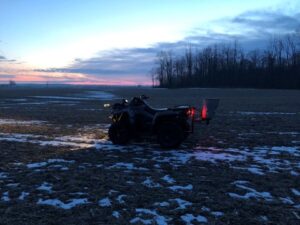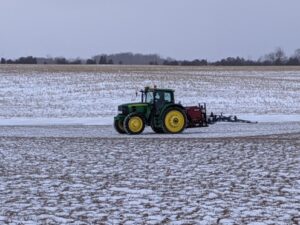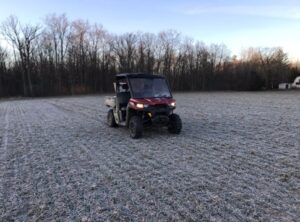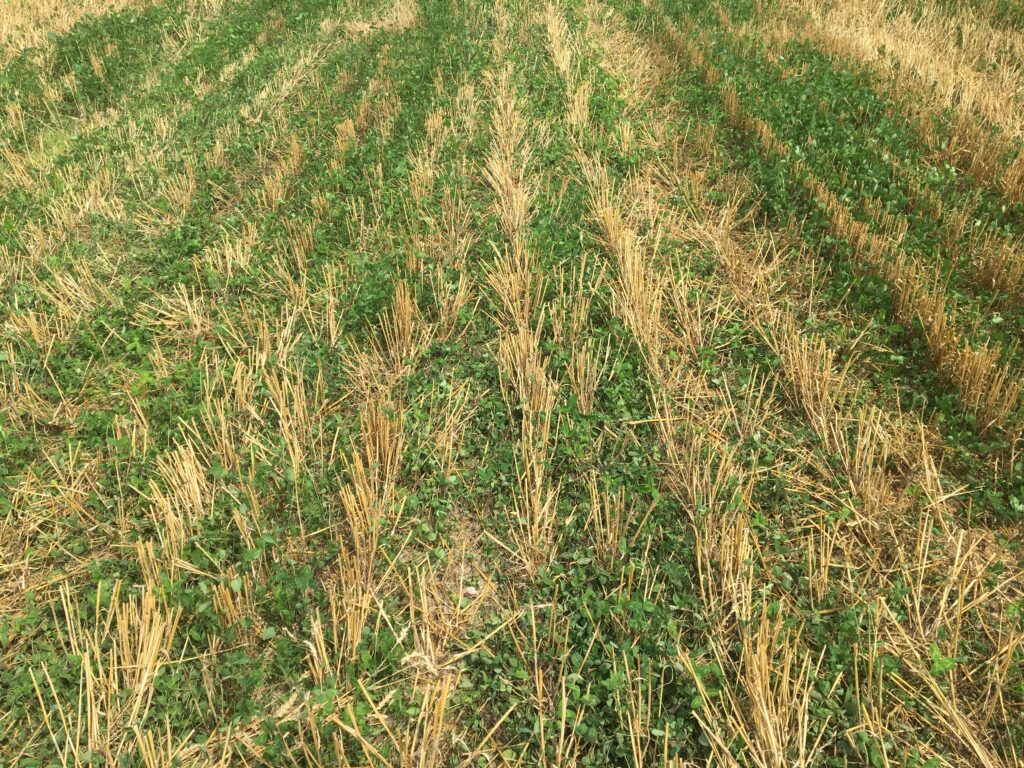It’s March, the snow is melting and the ground is frozen so we know what that means! Now is a good time to be considering or thinking about frost seeding some red clover into those winter wheat stands! While we can’t control all the factors that influence the success of our red clover stands in winter wheat, there are some things we can do including putting down the right rate and seeding early to improve our chances of getting a well established stand.
Why consider red clover?
Red clover provides many benefits to your cropping system. Long-term research trials at the University of Guelph both at Elora and Ridgetown campus show on average we get an extra 8 bu/ac in a 200 bu/ac corn crop or a 4% yield increase when wheat is underseeded to red clover. Not only do we see an increase in yield but also an improvement in overall soil health.
Which red clover should be used?
There are numerous types of clover available but single and double cut red clover are the main types of clovers underseeded to winter wheat in Ontario. Double cut varieties will flower in the year of seeding and tend to grow and accumulate biomass quickly. In contrast single cut is slower growing, won’t flower in the year of seeding and is a bit more drought tolerant. Price point may also have an influence on which clover growers select. If the clover is left into the fall or even the following spring, the differences in growth and impact are generally minimal.
When do I know the conditions are right?
The ideal time to seed red clover is in the early spring after most of the snow has melted to avoid having the seed wash away with the melt and when the ground is still frozen enough to avoid any rutting or damage to the winter wheat. The freeze thaw action of the soil surface during the early spring will help to improve clover seed contact with the soil. Ensure you are broadcasting the seed as consistently as possible across the field. In order to achieve this and to reduce damage or compaction to the field, growers may utilize an ATV (Figure 1) or other small utility vehicle equipped with a spinner spreader. Alternatively, a tractor or cabbed utility vehicle (Figure 2 &3) may be used when the ground is frozen enough to carry the equipment, this often occurs in the early hours of the morning (i.e. 2 – 3 am).



What rate of red clover should be applied?
Growers in Ontario are utilizing rates from 7-10 lbs/ac. Generally speaking lower rates are used when clover has been seeded earlier, prior to wheat green up, with higher rates being used in those fields that are seeded later once the wheat has started to green up.
Other management considerations?
Ensure you are using a herbicide program in your winter wheat crop that is safe for red clover. The OMAFRA Guide to Weed Control – Pub 75A is an excellent source for information on what herbicides are labelled for use in wheat underseeded to clover.
At the end of the day, red clover is an excellent option to consider if you are looking for ways to incorporate cover crops into your system and improve soil health. If you are looking to improve your chances of success ensure you are putting down the right rate and are seeding as soon as you can!
